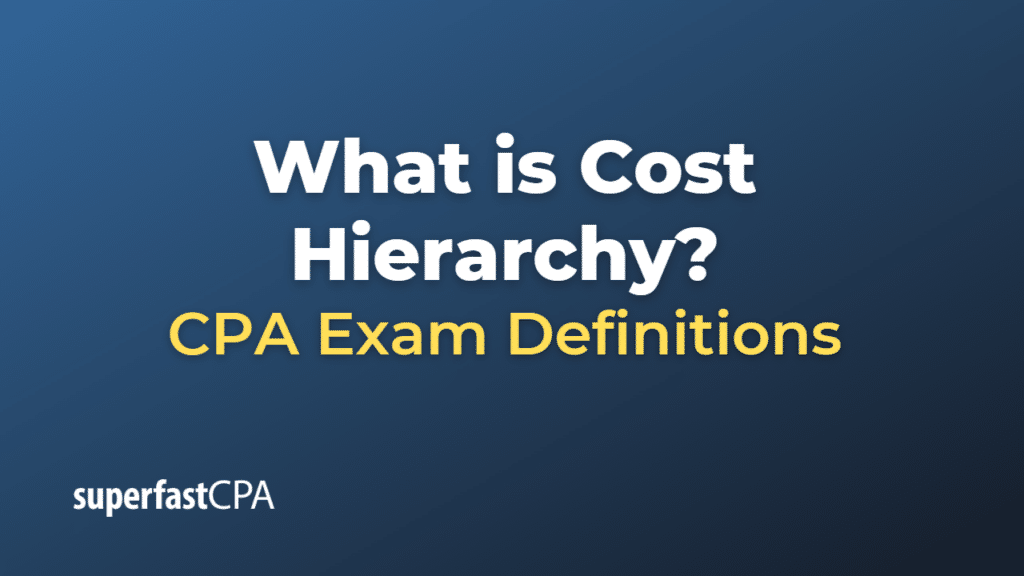Cost Hierarchy
Cost hierarchy is a concept used in activity-based costing (ABC) to categorize costs into different pools on the basis of the type of activities at various levels in an organization. The main idea is to assign costs more accurately to products or services based on the activities that drive the costs.
There are typically four levels of a cost hierarchy:
- Unit-Level Costs: These are costs associated with individual units of a product or service. They are incurred each time a unit is produced. Examples include the cost of raw materials and direct labor.
- Batch-Level Costs: These are costs associated with a group of units of a product or service. They are incurred each time a batch is produced, regardless of the number of units in the batch. Examples include setup costs and quality testing costs for each batch.
- Product-Level Costs: These are costs associated with specific products or services, regardless of the number of units or batches produced. Examples include product design costs and costs for maintaining a product manager and their team.
- Facility-Level Costs: These are costs that cannot be directly traced to individual units, batches, or products. They support the organization as a whole. Examples include rent, utilities, and the salaries of top-level management.
By using a cost hierarchy, companies can allocate costs more accurately based on the activities that drive those costs. This can lead to more accurate product costing, which can help inform pricing decisions and profitability analysis.
Example of Cost Hierarchy
Let’s consider a fictional company, “GadgetCo,” which manufactures two types of electronic gadgets: Gadget A and Gadget B.
Here’s how the costs at GadgetCo might be classified according to the cost hierarchy:
- Unit-Level Costs: These costs are incurred for each unit produced. For example, GadgetCo uses specific components to manufacture each unit of Gadget A and Gadget B. If it costs $10 in components to make one unit of Gadget A and $15 in components to make one unit of Gadget B, these costs would be unit-level costs.
- Batch-Level Costs: These costs are incurred for each batch produced. Suppose GadgetCo makes Gadget A in batches of 100 and Gadget B in batches of 50. Before each batch, the machinery needs to be set up, which costs $200. This setup cost is a batch-level cost.
- Product-Level Costs: These costs are associated with specific products. For example, GadgetCo has a product manager for each gadget type who oversees its production and marketing. The salaries of these product managers would be product-level costs.
- Facility-Level Costs: These costs are incurred for the overall operation of the business. For instance, GadgetCo rents a factory where it produces both gadgets. The rent for this factory, the utilities, and the salary of the CEO would be facility-level costs.
By using this cost hierarchy, GadgetCo can more accurately assign costs to its two products based on the activities that drive those costs. This will allow GadgetCo to better understand the profitability of each product and make more informed decisions about pricing, production levels, and strategy.













